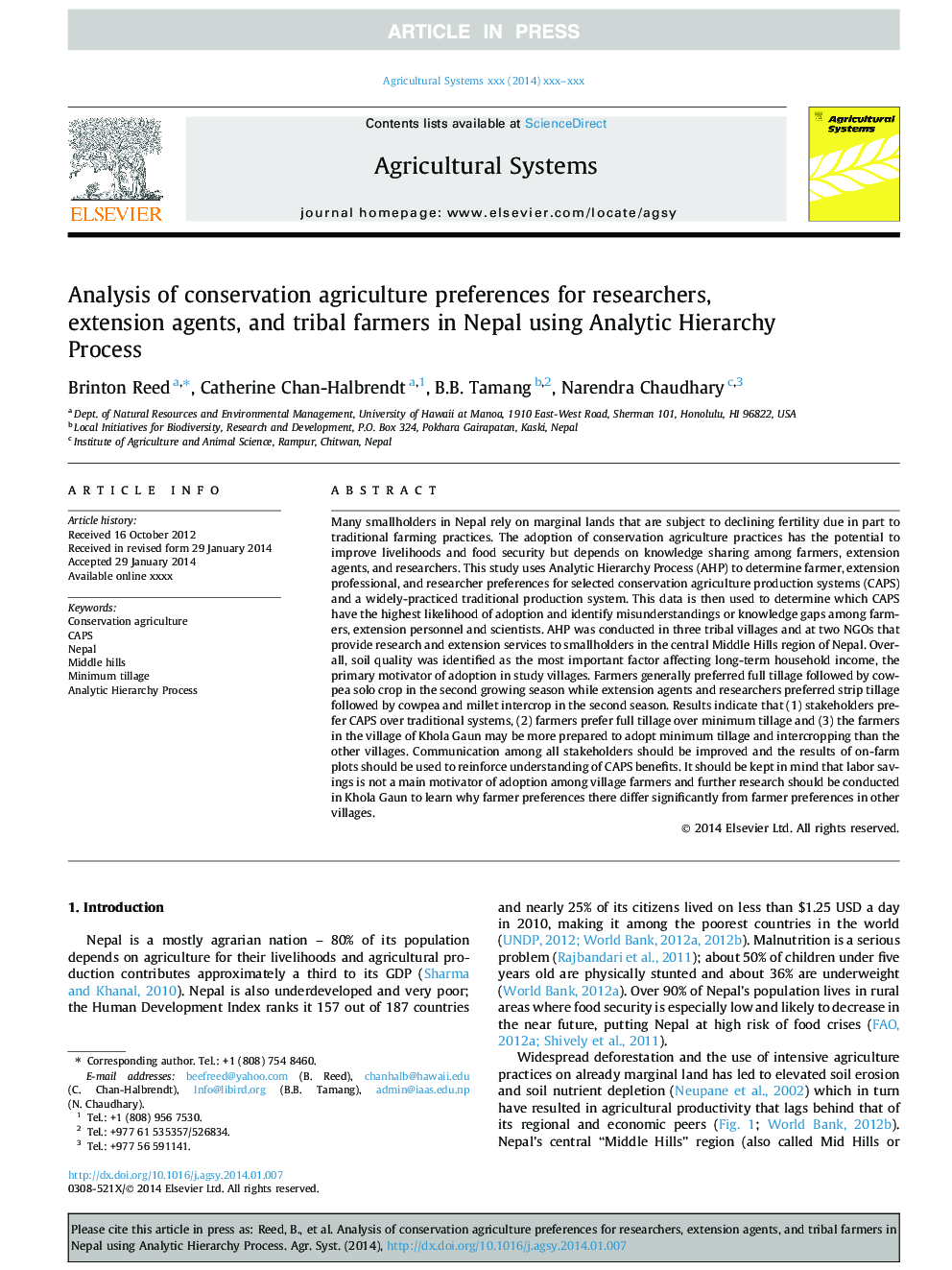| کد مقاله | کد نشریه | سال انتشار | مقاله انگلیسی | نسخه تمام متن |
|---|---|---|---|---|
| 6368660 | 1623243 | 2014 | 7 صفحه PDF | دانلود رایگان |
عنوان انگلیسی مقاله ISI
Analysis of conservation agriculture preferences for researchers, extension agents, and tribal farmers in Nepal using Analytic Hierarchy Process
ترجمه فارسی عنوان
تجزیه و تحلیل ترجیحات کشاورزی حفاظت برای محققان، عوامل توسعه و کشاورزان قبیله ای در نپال با استفاده از روند سلسله مراتبی تحلیلی
دانلود مقاله + سفارش ترجمه
دانلود مقاله ISI انگلیسی
رایگان برای ایرانیان
کلمات کلیدی
موضوعات مرتبط
علوم زیستی و بیوفناوری
علوم کشاورزی و بیولوژیک
علوم کشاورزی و بیولوژیک (عمومی)
چکیده انگلیسی
Many smallholders in Nepal rely on marginal lands that are subject to declining fertility due in part to traditional farming practices. The adoption of conservation agriculture practices has the potential to improve livelihoods and food security but depends on knowledge sharing among farmers, extension agents, and researchers. This study uses Analytic Hierarchy Process (AHP) to determine farmer, extension professional, and researcher preferences for selected conservation agriculture production systems (CAPS) and a widely-practiced traditional production system. This data is then used to determine which CAPS have the highest likelihood of adoption and identify misunderstandings or knowledge gaps among farmers, extension personnel and scientists. AHP was conducted in three tribal villages and at two NGOs that provide research and extension services to smallholders in the central Middle Hills region of Nepal. Overall, soil quality was identified as the most important factor affecting long-term household income, the primary motivator of adoption in study villages. Farmers generally preferred full tillage followed by cowpea solo crop in the second growing season while extension agents and researchers preferred strip tillage followed by cowpea and millet intercrop in the second season. Results indicate that (1) stakeholders prefer CAPS over traditional systems, (2) farmers prefer full tillage over minimum tillage and (3) the farmers in the village of Khola Gaun may be more prepared to adopt minimum tillage and intercropping than the other villages. Communication among all stakeholders should be improved and the results of on-farm plots should be used to reinforce understanding of CAPS benefits. It should be kept in mind that labor savings is not a main motivator of adoption among village farmers and further research should be conducted in Khola Gaun to learn why farmer preferences there differ significantly from farmer preferences in other villages.
ناشر
Database: Elsevier - ScienceDirect (ساینس دایرکت)
Journal: Agricultural Systems - Volume 127, May 2014, Pages 90-96
Journal: Agricultural Systems - Volume 127, May 2014, Pages 90-96
نویسندگان
Brinton Reed, Catherine Chan-Halbrendt, B.B. Tamang, Narendra Chaudhary,
